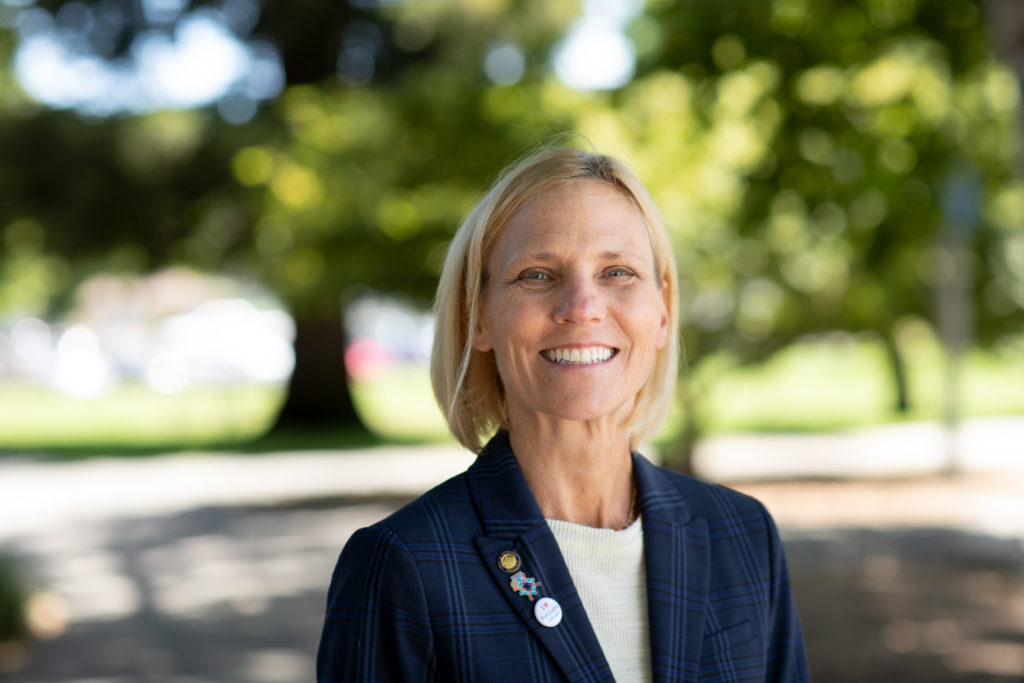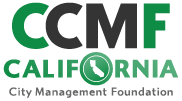What inspired you to enter city management? How did you become a city manager?
 My trajectory was atypical and non-traditional. While my education and subsequent training was focused on public communications and journalism, I was inspired by my local government professor, Terry Christensen, to serve in local government—which began with an internship with the San Jose Redevelopment Agency and blossomed into becoming their first Communications Director.
My trajectory was atypical and non-traditional. While my education and subsequent training was focused on public communications and journalism, I was inspired by my local government professor, Terry Christensen, to serve in local government—which began with an internship with the San Jose Redevelopment Agency and blossomed into becoming their first Communications Director.
It was there that I experienced the agility and effectiveness of local government and fell in love with working alongside our community on placemaking, adaptive reuse, affordable housing, and city planning/land use. Working for the largest redevelopment agency in the state and on legacy projects and initiatives like the $250M Strong Neighborhoods Initiative, the redevelopment of Downtown San Jose, and producing more affordable housing than any other organization outside of HUD, catapulted me into other foundational opportunities working for local jurisdictions in various capacities—and always with a focus on community engagement–which ultimately provided me the honor of serving as the City Manager for the city I live in.
What do you enjoy the most about your role?
The ability to collaborate with our staff and community to affect positive change almost immediately. The benefit of local government is that we are the people and eyes on the street who can address quality of life issues quicker than other levels of government. We are also a ‘people business’—existing for those we serve (our community) and as a staff (people behind the services).
I thrive on building community—demystifying government, making government accessible, and problem-solving with my staff and with our community, as well as creating an organizational culture of innovation through empowerment. We can always find a way to ‘yes.’
What role does a city manager play in local government, and how do you feel it differs from that of a councilmember or mayor?
We are the coach, the strategist. Our role is to figure out how to provide our Council with the critical and nuanced information to make the best decisions for our community. We are the curators of how to best translate, and successfully implement, Council policy. For me, this means my staff has the needed resources, support, and space to get the project/program/policy accomplished AND that we have community champions at the ready to assist in this effort. City managers and our councils are teams that ideally are working in lockstep/rowing in the same direction to address the needs of our communities and together create the city our community deserves.
What does your typical day look like?
Friday—top 10 priorities identified for the following week
Monday a.m.—top 10 priorities replaced by 20 new priorities for the week
Petaluma is a city that is leading, and we are also rebuilding from years of disinvestment due to lack of funding, so there is a lot to accomplish, and no two days are alike. In my first four years as city manager, we had five declared emergencies. While that could have been my entire focus, we had to demonstrate that we are a city that works for everyone and that we are the full-service city that our community needs and deserves. So it required a lot of capacity-building within and outside of our organization, and building our collaboration and strategic planning ‘muscles’ have been my primary focus.
Like most of my colleagues in city management, each day is an opportunity for collaboration, innovation, and creativity—in the form of meetings, planning, troubleshooting, issue spotting, mentoring, problem-solving. My mantras are finding a way to ‘yes’ and when we fail, let’s fail fast.
What city project are you most proud of?
Working with our community to pass Measure U, a 1-cent sales tax that prevented us from filing bankruptcy. Being an older city costs a lot! The city had two previous attempts at a sales tax initiative that failed, and when I came on board was facing a $6.5 million deficit in 2021 and also had the dubious distinction of having the worst roads in the Bay Area. My team and I launched a Fiscal and Organizational Sustainability initiative and took it on the road to our community. We demystified the cost of city services, what pensions really are, what the real cost of deferred maintenance means, and demonstrated—even in our underfunded state—what a full-service city can and should do. Then the pandemic hit—and we were there for our community with quick and impactful distribution of ARPA funding, with removing obstacles to outdoor dining and other business challenges, and we took care of our most vulnerable community members and our staff. In November 2020, our community supported our revenue initiative which generates $13.5 million annually. We are forever grateful to our Petaluma community and strive to demonstrate that every day.
What are the greatest challenges facing city managers in the state today?
Impacts from climate change, as our infrastructure was not designed for these weather extremes, providing ample diverse and affordable housing and ending homelessness, recruitment and retention of talent, and the de-evolution of democracy/civic engagement process.
When and how do you interact with the residents of your city?
As I live in the city I manage, my interactions are frequent and an important element of our success. I strive to be very accessible—I respond directly to complaints, attend celebrations, speak at events, shop/dine/volunteer in my city, and I tell our residents that my staff and I work for them so they should reach out with concerns, ideas, and let us know how we can best serve them.
Last year, the city of Petaluma partnered with Healthy Democracy to convene the most intensive lottery-selected deliberative process in the United States to-date. The Petaluma Fairgrounds Advisory Panel brought together a microcosm of Petalumans, who typically don’t engage with the city, to reimagine the future of a beloved Fairgrounds property in the center of town. The panel made detailed recommendations to our city council and modeled a more collaborative way forward.
What is the role of a city manager in upholding the public’s trust in local government?
Following through on what you’ve committed to and creating that ‘feedback loop’ so the community sees that demonstration in practice; to be transparent; accessible; accountable; authentic; lead by example and with integrity.
How are cities shaping the future of California?
We are the ‘pilot programs’ for how government can work. We are building the leaders, shaping/customizing policy for our communities that are providing the templates for others statewide; creating inclusive communities for all and every day we have the opportunity to reimagine government and how we deliver services.
